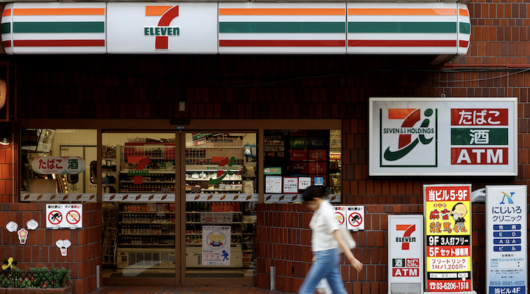All publicity is good publicity…right? The famous marketing adage has renewed relevance following the controversy surrounding American Eagle’s recent campaign starring American actress Sydney Sweeney. The campaign, dubbed “Sydney Sweeney Has Great (American Eagle) Jeans”, went live on July 23 and stirred up much discussion online, some critical and some more neutral, about the intention behind the play on words between the homophones “jeans” and “genes”. Investors appear
s appear thrilled with the attention the campaign has garnered, with the brand’s stock closing at US$12.63 at the end of trading on Tuesday, August 19, up from US$10.20 before the campaign launched. However, other metrics indicate the increase in market value may be misguided.
Foot traffic data collected by geospatial intelligence platform Pass_by shows that American Eagle’s in-store visits fell by 3.90 per cent year-over-year in the week of July 27-August 2, and declined further by 8.9 per cent year-over-year in the week of August 3-9.
“It’s rare to see a sudden, sharp drop like this after months of steady growth,” James Ewen, Pass_by’s vice president of marketing, said in a statement.
“When retail foot traffic patterns break trend so quickly, it’s usually cultural, this suggests the Sweeney controversy may be resonating beyond social media and into real-world consumer behavior.”
Analysing the impact of the Sydney Sweeney campaign
As DeAnn Campbell, a retail strategist with AAG Consulting Group, stated in a recent LinkedIn post, “Results are finally in on American Eagle’s contentious ad. Now that the dust has settled, there are interesting results comparing this year vs last year’s American Eagle campaign.”
Campbell noted that the brand’s stock has fluctuated over the past few weeks, with the stock peaking at US$13.28 at peak-performance on August 4, but diving down to US$12.54 by August 12.
These numbers are still low compared to last year’s figures, when the brand was trading at US$20.36 on August 6 and US$20.97 on August 12, respectively.
Additionally, Campbell noted that while the brand’s initial web traffic surged 60 per cent as everyone seemed to be talking about Sweeney’s “jeans”, overall sales remained relatively flat.
While store traffic increased in some states, it decreased in others, and was down ooverall compared to last year in the weeks after the campaign launched.
“The irony is, American Eagle Outfitters’ store traffic was up 5 per cent over [the] previous year in the two weeks before the Sweeney ad was released,” Campbell said.
The new rules of marketing
While any publicity, whether good or bad, can help raise consumer awareness of a brand, that attention doesn’t necessarily translate to a brand’s ability to generate sales.
This can be seen in the performance of American Eagle’s 2024 campaign “Live Your Life” featuring tennis star Coco Gauf.
As Campbell noted, even though Gauf’s campaign didn’t generate the same level of noise as Sweeney’s campaign, it was successful in driving sales.
In the quarter in which the Gauf campaign launched, American Eagle Outfitters reported a record US$1.3 billion in revenue, with comps up 4-5 per cent year-on-year.
Campbell also pointed out that last year’s campaign resulted in a significant uptick in brand perception with Gen Z and millennial shoppers, according to The Harris Poll, whereas this year polls indicate indifference from the same demographic, meaning that the ad didn’t boost the brand’s image.
Gauf’s campaign tapped into a major marketing trend of supporting female athletes, which brands like Coach and Milani Cosmetics have also benefited from.
Whereas the focus of Gauf’s campaign was on sharing an authentic, “feel great” story of sportsmanship and staying true to one’s voice, Sweeney’s campaign focused on her superior “genes” in a way that felt cringe to many and downright offensive to some.
“At the end of the day, the goal of a good retail campaign is twofold: to promote sales and showcase brand values,” said Campbell.
She explained that while American Eagle’s “Live Your Life” campaign ticked these two boxes successfully, the “Sydney Sweeney Has Great Jeans” campaign only earned the brand notoriety and ultimately failed to check these boxes.
Going forward, she said, American Eagle needs to tap into that sense of authenticity and representation that so many Gen Z consumers are craving, without resorting to controversial marketing tactics.
“American Eagle Outfitters is a great brand with a stated mission of inclusion and innovation. I sincerely hope they return to that as quickly as possible because their young, vulnerable, yet strong-minded customer base deserve the best,” Campbell stated.







